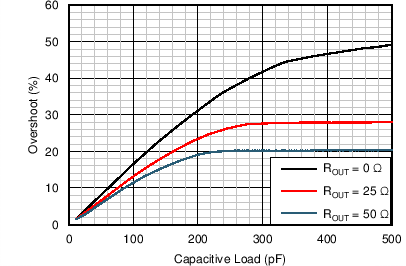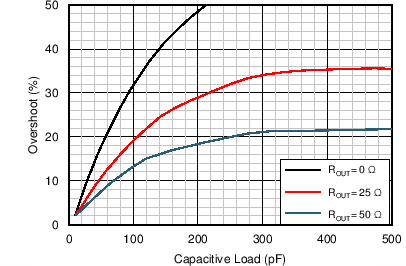ZHCSE47A September 2015 – June 2022 OPA1688
PRODUCTION DATA
- 1 特性
- 2 应用
- 3 说明
- 4 Revision History
- 5 Device Comparison Table
- 6 Pin Configuration and Functions
- 7 Specifications
- 8 Detailed Description
- 9 Applications and Implementation
- 10Power Supply Recommendations
- 11Layout
- 12Device and Documentation Support
- 13Mechanical, Packaging, and Orderable Information
封装选项
机械数据 (封装 | 引脚)
散热焊盘机械数据 (封装 | 引脚)
- DRG|8
订购信息
8.3.3 Capacitive Load and Stability
The dynamic characteristics of the OPA1688 are optimized for commonly-used operating conditions. The combination of low closed-loop gain and high capacitive loads decreases the phase margin of the amplifier and may lead to gain peaking or oscillations. As a result, heavier capacitive loads must be isolated from the output. The simplest way to achieve this isolation is to add a small resistor (for example, ROUT = 50 Ω) in series with the output. Figure 8-3 and Figure 8-4 show graphs of small-signal overshoot versus capacitive load for several values of ROUT; see the Feedback Plots Define Op Amp AC Performance application bulletin, available for download from www.ti.com, for details of analysis techniques and application circuits.

| G = –1 |

| G = 1 |